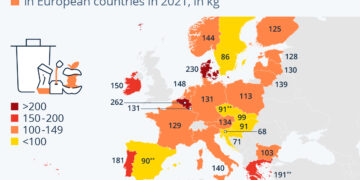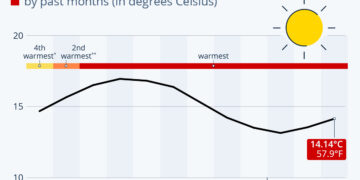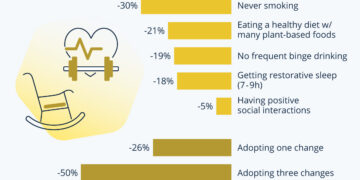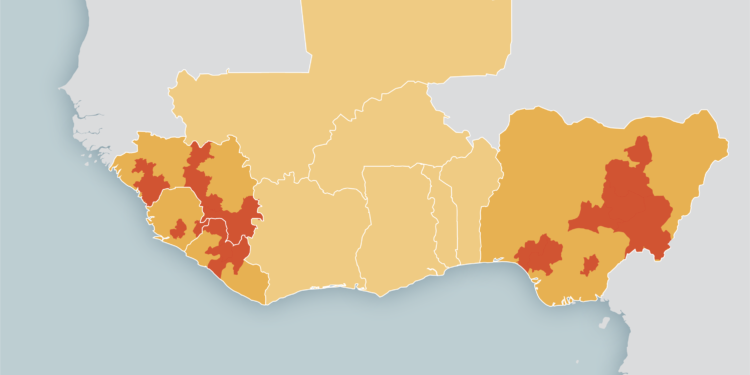Long neglected, Lassa fever is surging in West Africa. Researchers want to know why
IRRUA, NIGERIA, AND KENEMA, SIERRA LEONE—Sitting on a bench outside the Irrua Specialist Teaching Hospital (ISTH) in Edo state in southwestern Nigeria in September 2023, Muhammed Luqman Dagana recounted his ordeal earlier in the year with Lassa fever, a deadly hemorrhagic disease of West Africa. At first the 33-year-old wasn’t alarmed—his fever, headache, body aches, and cough were innocuous enough. A doctor at his local clinic gave him antibiotics for typhoid fever and antimalarial drugs. But his symptoms persisted, so he tried another clinic. Again, the diagnosis was malaria and typhoid.
Dagana continued to decline, his fever fluctuating wildly. When a third clinic referred him to the general hospital here, he was barely able to walk and was having trouble breathing. Ten days after his symptoms began, he was finally diagnosed with Lassa fever and immediately transferred to the hospital’s high-containment isolation ward. By then Dagana was in and out of consciousness, with acute renal failure.
The experience was “terrible, horrible,” said Dagana, who is married and has a young son. “People were suffering around me. I could hear them crying out.” A member of his community was brought in unconscious; 20 minutes later he was dead. “I was so frightened.”
He spent more than 1 month in the hospital and underwent five rounds of dialysis. As of September 2023, his kidney function was still not back to normal. And yet he’s one of the lucky ones. Although about 80% of Lassa virus infections are mild or asymptomatic, 15% to 20% of cases of severe disease are fatal—a number that can reach 70% in some places and in some epidemics. “That’s up there with Ebola,” says virologist Robert Garry of the Tulane University School of Medicine.
Lassa fever kills far more people than Ebola does—10,000 or more a year, some researchers suspect, although no one knows for sure. But except for a small cadre of dedicated researchers, it has been largely ignored. Identified only half a century ago, the rodent-borne disease, which can more rarely be transmitted between people via body fluids, affects the rural poor, who live far from any health center. Most cases go undiagnosed and unreported, and many people die in their villages.
“It is the most neglected of neglected diseases,” says Sylvanus Okogbenin, an obstetrician who chairs a working group at ISTH’s Institute of Viral and Emergent Pathogens Control and Research.
A record-shattering epidemic in 2018 in Nigeria, the hardest hit country, put Lassa fever on the map, prompting both the World Health Organization (WHO) and the Nigerian government to declare a public health emergency. Confirmed cases, which numbered roughly 25 to 100 in previous outbreak years, reached 633, and 171 people died, including 45 health care workers.
Cases in Nigeria have continued to climb each year since then. Infections still surge in the dry season, which runs from about December to May, but since 2018 have been occurring year-round. Most worrisome, cases are popping up outside the four known endemic countries: Nigeria, Sierra Leone, Guinea, and Liberia.
A region at risk
Lassa fever has long been concentrated in endemic areas in Nigeria, Guinea, Liberia, and Sierra Leone. But in recent years, cases of the deadly hemorrhagic disease have been popping up in other parts of West Africa. With climate change and population growth, the virus is expected to extend its reach.(GRAPHIC) D. AN-PHAM/SCIENCE; (DATA) WORLD HEALTH ORGANIZATION
As a result Lassa fever has vaulted up on the global health agenda, earning a spot on WHO’s list of notorious pathogens that have epidemic or pandemic potential and urgently require countermeasures. Several groups are working on badly needed diagnostics and drugs. The nonprofit Coalition for Epidemic Preparedness Innovations (CEPI) has named Lassa fever one of its priority diseases, investing in vaccine development and funding the largest ever study of Lassa’s true burden. And researchers in Africa and abroad are scrambling to learn why it is on the march—whether because of better surveillance, some change in the virus or in the rodents that carry it, a growing population, or a changing environment. “With climate change, what we saw 5 years ago doesn’t hold anymore,” says Gabrielle Breugelmans, director of epidemiology and data science at CEPI. “The hot spots of today are not the hot spots of tomorrow.”
IN 1969, two missionary nurses in the remote village of Lassa, in Borno state in northeastern Nigeria, were stricken by a mysterious febrile disease. Both died. When a third nurse who cared for the second case, Penny Pinneo, fell ill with a spiking fever, chills, an ulcerated throat, and profound weakness, she was evacuated to New York Presbyterian Hospital. After a devastating and prolonged illness, she slowly recovered.
Virologist Jordi Casals-Ariet and his team at the Yale University Arbovirus Research Unit analyzed blood samples from the nurses in search of what they suspected was a new virus. They isolated a single-stranded RNA virus in what became known as the Arenavirus family and named it for the village where it was discovered. But Casals-Ariet became infected while handling the samples and almost died, saved only by a risky transfusion of antibodies from Pinneo’s blood. When Casals-Ariet’s technician, Juan Roman, also became infected and died, Yale immediately halted work with the live virus and transferred it to the “hot” lab at what is now the U.S. Centers for Disease Control and Prevention (CDC) in Atlanta.
The United States now classifies the Lassa virus as a biosafety level-4 pathogen, so dangerous that the live virus can only be studied in the highest security laboratories.
In 1972, during a Lassa fever outbreak in Eastern Province in Sierra Leone, Thomas Monath, then a virus hunter at CDC, and his colleagues set out to find the animal reservoir. Similar viruses were known to be spread by small vertebrates, so they trapped 641 animals and removed tissue and blood samples.
Bats, shrews, monkeys, and a single turtle turned up nothing. But Monath eventually isolated the virus from 14 specimens of multimammate mouse, Mastomys natalensis, so-called because of its long rows of nipples for nursing big litters. Ubiquitous across sub-Saharan Africa, M. natalensis, often referred to as the common African rat, is a denizen of poor villages, scurrying in and out of houses for food—especially during the dry season when farmers burn the fields after harvest, driving out the mice.
The virus couldn’t have picked a better host. Prolific breeders, females bear 10 to 12 pups every 45 days, and an infected female passes the virus to her offspring. They aren’t sickened by the virus, but they are thought to carry and shed it for the rest of their lives. “That’s the definition of a good reservoir,” says rodent ecologist Elisabeth Fichet-Calvet of the Bernhard Nocht Institute for Tropical Medicine (BNITM), who has spent 2 decades studying the complex interplay of the Lassa virus and its host.

Since 2016, several other rodent species in Nigeria, Guinea, Ghana, and Benin have been shown to harbor the virus. But M. natalensis remains the main driver of deadly outbreaks In contrast to Ebola, where one spillover from bat to human can set off a chain of human-to-human transmission, the Lassa virus is usually contracted by direct contact with an infected rodent—young boys hunt and eat them—or its saliva, urine, and droppings. But the virus also spreads person to person, mostly when unsuspecting health workers without personal protective equipment (PPE) are exposed to an infected person’s blood or bodily fluids. “We lose a lot of specialized health care workers,” says Ifedayo Adetifa, director of the Nigeria Centre for Disease Control and Prevention (NCDC).
Family clusters occur, too. In 2022, for example, a man returned to the United Kingdom from a trip to Mali and was hospitalized with what was later confirmed to be Lassa fever. He passed the virus on to his wife and child, and the child died. Infectious virus can persist in the body and semen for months after recovery, posing a long-term transmission risk.
LONG AFTER THE DISEASE was identified, it went largely unrecognized in West Africa, even as communities in Nigeria and the other endemic countries began to document outbreaks of acute febrile illness. In January 1987, physician Felix Okogbo saw a rash of patients at his clinic in Ekpoma, Nigeria, near Irrua. Cases declined in March, then came back with a vengeance the following January. So he called the illness January fever.
Then in January 1989, a woman in Ekpoma died of what was diagnosed as malaria, and her husband died soon after. After their two sons came home to bury them, both succumbed to the mysterious illness. One had already returned home to Chicago, where physicians were startled to find Lassa virus antigens during a postmortem.
Okogbo himself fell ill in 1990, then lost his pregnant wife to a hemorrhagic illness the following year, during an outbreak that also killed 24 students at the university where she taught.
Virologists came to investigate, and one sent a sample of Okogbo’s blood to CDC, where testing revealed antibodies to the Lassa virus. “That’s when I connected the dots,” says Okogbo, who joined ISTH in 1999. People blamed witchcraft for the deaths, Okogbo says. “I told them it is not witchcraft, it is a virus.”





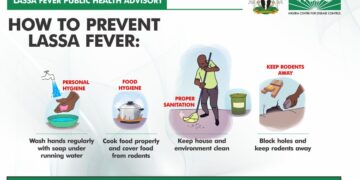






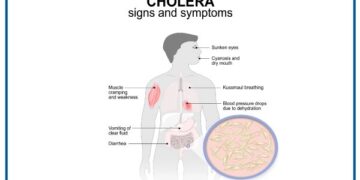

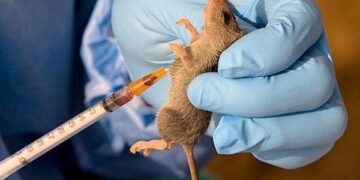



![Antimicrobial Resistance [AMR] in Hausa](https://healthtoday.com.ng/wp-content/uploads/2024/02/antimicrobial-resistance-AMR--360x180.jpeg)




